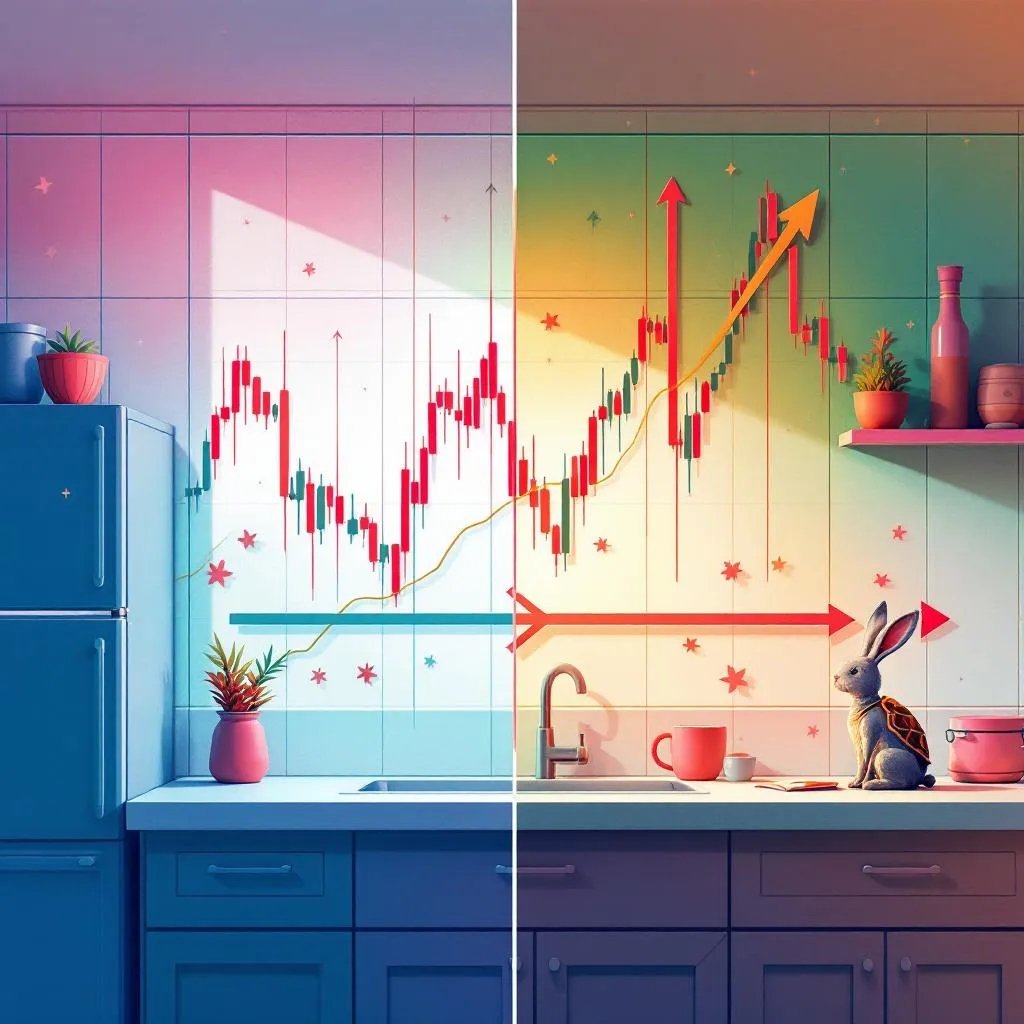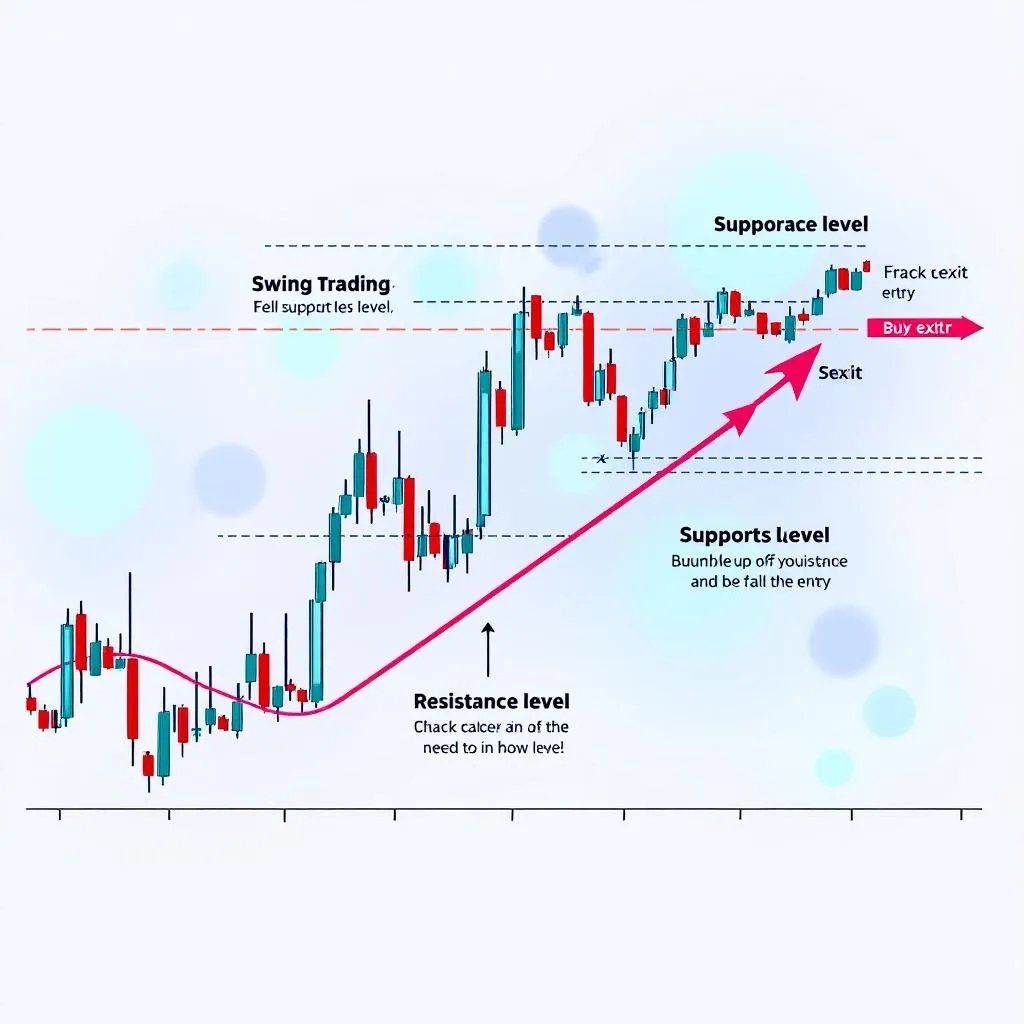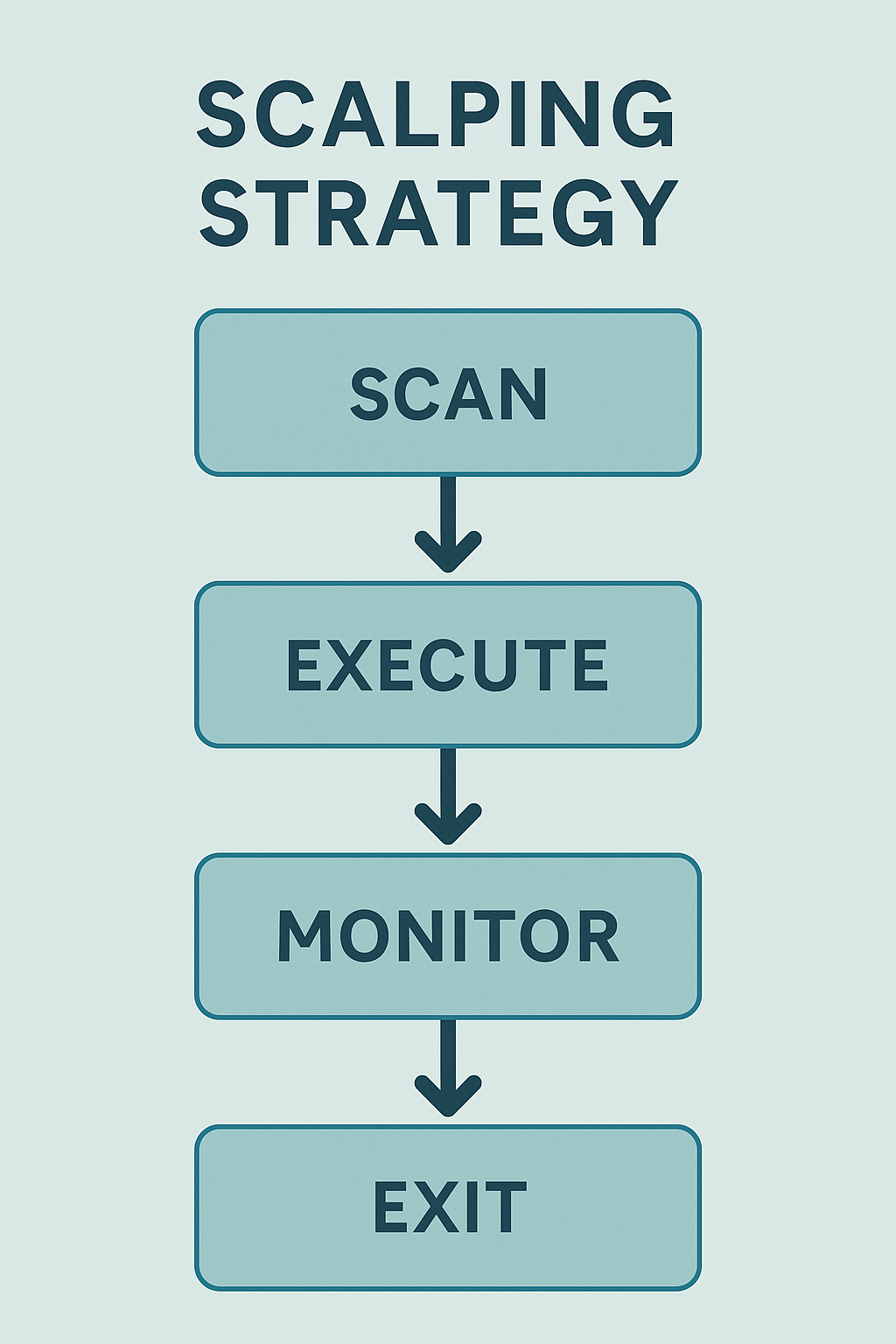
Swing Trading vs. Scalping: Which Strategy Suits Your Trading Style?
When markets wobble and volatility spikes, traders must select a style that aligns with their lifestyle, risk tolerance, and capital. Consequently, the debate between swing trading vs. scalping has become more relevant than ever. Swing trading offers multi-day trend plays, whereas scalping delivers lightning-fast micro-profits. Moreover, recent MarketWatch coverage has highlighted how June 2025’s tech pullback created prime swing setups, while economic data releases triggered intense scalp activity for day traders 【1†】. Therefore, this guide dives deep into:

- The core mechanics of both strategies
- A side-by-side comparison of timeframes, profit targets, and stress levels
- MarketWatch and Investopedia insights on volatility’s impact
- Tips to align each approach with your capital, schedule, and temperament
By the end, you’ll have actionable insights to choose the strategy that suits your trading ambitions and personality.
What Is Swing Trading?
Swing trading involves holding positions for several days to a few weeks to capture the full “swings” within established market trends. As a result, it appeals to traders who want to balance time commitment and profit potential.
Time Horizon
- Typical trades last 2–10 days, sometimes extending into multiple weeks.
- In contrast to intra-day strategies, swing traders can step away from their desks without risking intraday noise.
Analytical Approach
- Utilizes daily and weekly charts, RSI divergences, and Fibonacci retracement levels to identify high-probability entries.
- In addition, swing traders often combine candlestick patterns with moving-average crossovers for confirmation.
Flexibility
- Ideal for part-time traders and professionals: check charts at pre-set intervals rather than staring at screens all day.
- Furthermore, swing trading allows you to manage risk overnight through well-placed stop-loss orders.
According to a recent MarketWatch feature on retail traders, moderate volatility in June 2025 created ideal swing setups in technology and consumer-staples stocks, underscoring the strategy’s strength when trends are clear and pullbacks are orderly【1†】.
What Is Scalping?
Scalping is an ultra-short-term trading style that targets tiny price movements—often just 0.1% to 0.5%—held for seconds to minutes. Consequently, scalpers aim for a high number of low-risk, high-frequency trades.
Trade Frequency
- Scalpers execute 50–200 trades per day during peak liquidity sessions.
- In fact, it’s common for seasoned scalpers to engage in dozens of transactions within a single hour.
Execution Speed
- Requires low-latency trading platforms, hot keys, and direct market access to capitalize on fleeting spreads.
- Moreover, real-time data feeds and rapid order routing are non-negotiable for consistent scalp profits.
Profit per Trade
- Small gains per trade, often 0.1%–0.5%, are leveraged by volume.
- However, commissions and spreads must be minimal—Investopedia notes that scalpers exploit bid-ask spreads by using one- to five-minute charts and tick data【2†】.
Ultimately, scalping demands intense focus, lightning reflexes, and a robust technological setup to succeed. Nevertheless, when executed flawlessly, it can generate steady income even in low-volatility conditions.
Key Differences of Swing Trading and Scalping at a Glance
| Factor | Swing Trading | Scalping |
|---|---|---|
| Holding Period | Days to weeks | Seconds to minutes |
| Trades per Day | 1–5 | 50–200+ |
| Profit Target | 1%–3% per trade | 0.1%–0.5% per trade |
| Time Commitment | 1–2 hours/day | 6–8 hours/day |
| Stress Level | Moderate | Very high |
| Capital Requirement | $5,000+ to diversify | $25,000+ (Pattern-Day Rule) |
| Platform Needs | Standard broker | Professional-grade execution |
| Ideal for | Busy professionals, beginners | Full-time, experienced traders |
Key takeaway: Scalping is a sprint, while swing trading is a middle-distance run. Choose based on your stamina and schedule.
Market Conditions Favoring Each Trading Style
Swing Trading Environments
- Trending markets with 2%–5% weekly moves favor swing setups.
- Quiet after-hours sessions reduce noise for overnight holds.
- Example: MarketWatch reported June’s tech pullback as a “swing trader’s paradise,” where key stocks retraced 38.2% on healthy volume【1†】.
Scalping Environments
- High-liquidity windows, such as the London/New York overlap, fuel scalp opportunities.
- Sharp intraday volatility around economic data releases (e.g., Nonfarm Payrolls) triggers scalpable spikes.
- Example: Scalpers ramped up activity during the May 2025 NFP surprise, capitalizing on 20-pip swings within seconds.
Skill Sets & Capital Requirements
Both strategies require specialized skills and a minimum capital threshold to operate effectively.
| Strategy | Minimum Capital | Margin Rules |
|---|---|---|
| Swing | $5,000 | No pattern-day restrictions |
| Scalping | $25,000 | Pattern Day Trader Rule |
Swing Trading Skills
- Technical Analysis on daily and weekly charts.
- Patience to weather overnight and weekend risks.
- Risk Management through strategic stop-losses and profit targets.
Scalping Skills
- Rapid Decision-Making under pressure.
- Mastery of Order Types (market, limit, OCO).
- Infrastructure: low-latency broker, direct market access.
Entry & Exit Trading Strategy Visual Tips

- Identify major support and resistance on the daily chart.
- Enter near a 38.2%–50% Fibonacci pullback.
- Place stop 1–2 ATR below entry; target 1.5–2× ATR above entry.

- Use a 1-minute chart with 9-EMA and 21-EMA crossovers.
- Enter when price breaks the spread in your favor.
- Exit on a micro-profit (2–5 pips) or at the first sign of reversal.
Risk Management & Trading Psychology
No matter your strategy, managing risk and mastering psychology are non-negotiable.
- Swing Traders should manage overnight gaps by setting wider stops and resisting constant screen-checking—use alerts instead.
- Scalpers must employ tight stop-loss orders (0.5–1× ATR) and cultivate muscle memory for rapid entries and exits.
A recent MarketWatch psychology piece emphasizes that stress tolerance is the single biggest predictor of a scalper’s success【3†】. Therefore, choose the style that aligns with your emotional bandwidth.
How to Choose Your Trading Strategy
Answer these five questions to find your best fit:
- What is your daily availability?
- How much drawdown can you tolerate?
- What is your capital and margin requirement?
- Do you have the necessary technology for low-latency execution?
- Which environment suits your personality: rapid-fire or strategic patience?
Ultimately, honesty with yourself about time, risk tolerance, and focus level will steer you toward the right style.
Whether you embrace the rapid-fire world of scalping or the strategic pace of swing trading, success hinges on matching the strategy to your life circumstances, mental edge, and capital. Therefore, backtest diligently, start with small position sizes, and continuously refine your playbook before scaling up.
Ready to hone your chosen style? Subscribe to TradeStockAlerts for daily trade setups, real-time signals, and in-depth analysis!
Which strategy aligns with your trading style—swing trading’s patience or scalping’s adrenaline? Share your experiences in the comments below!